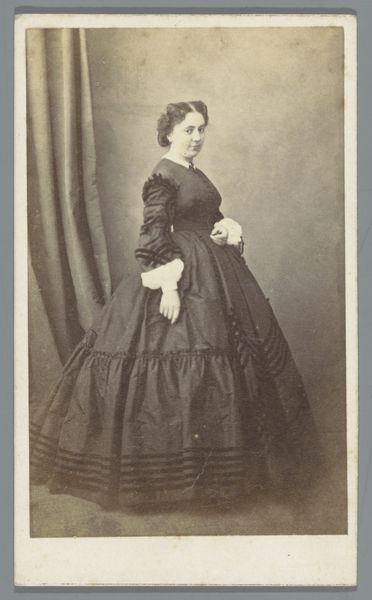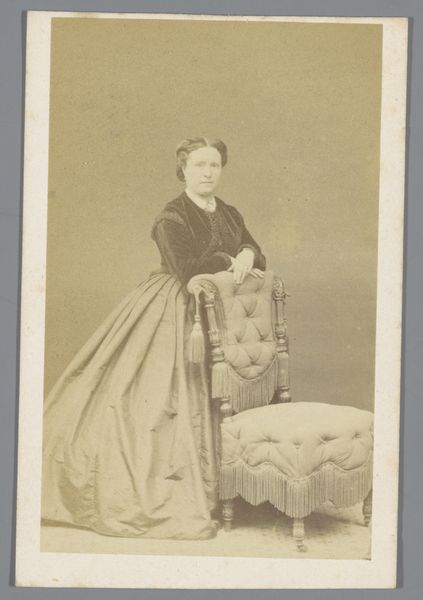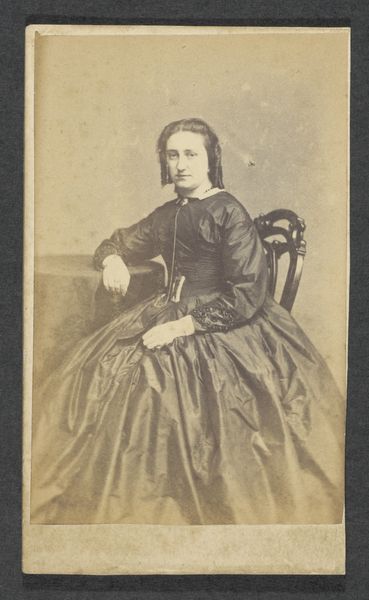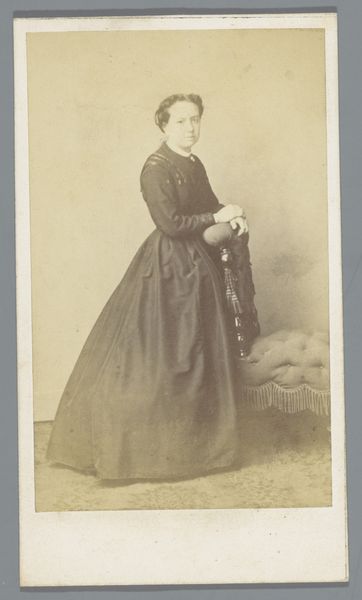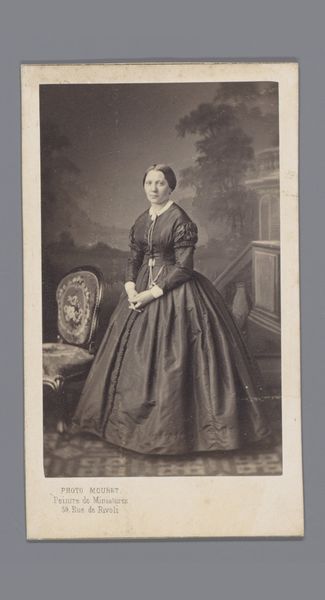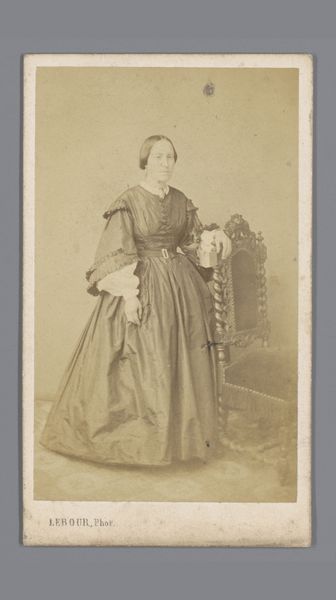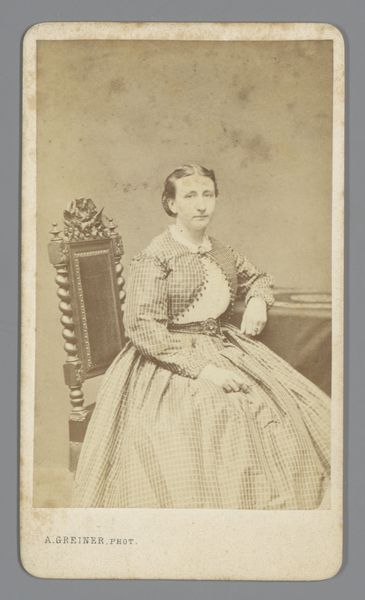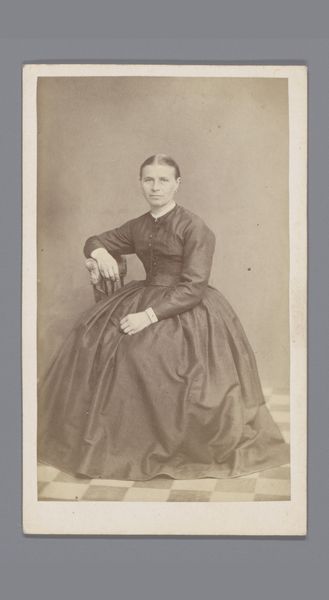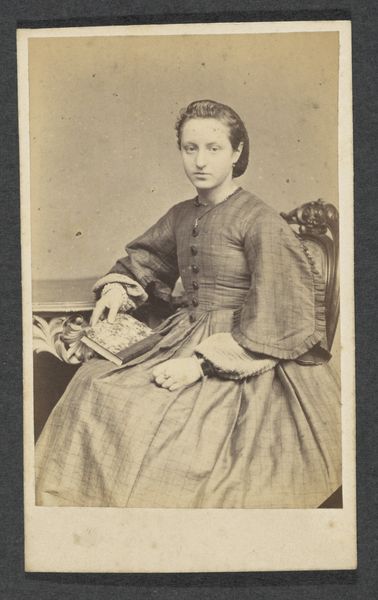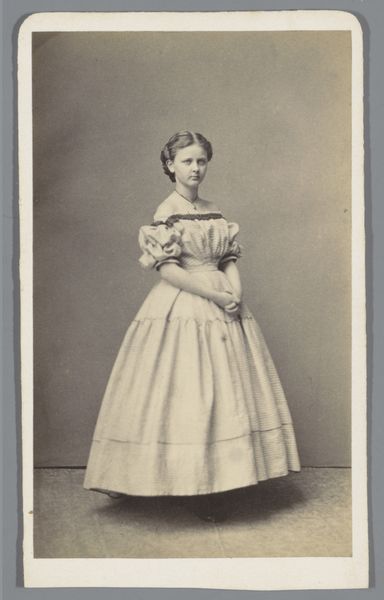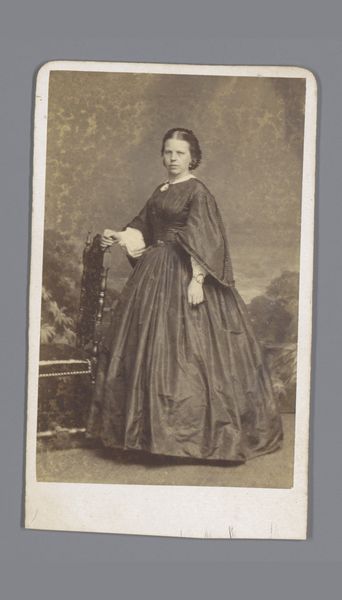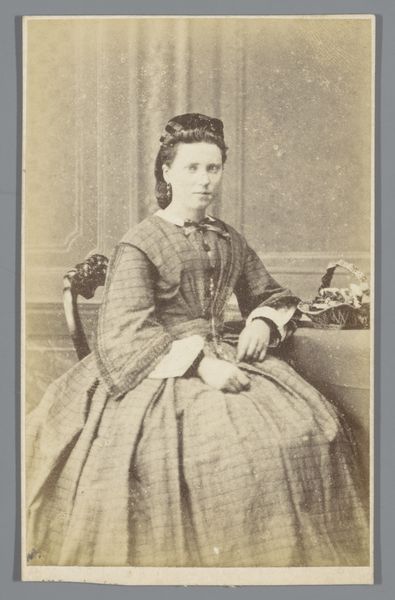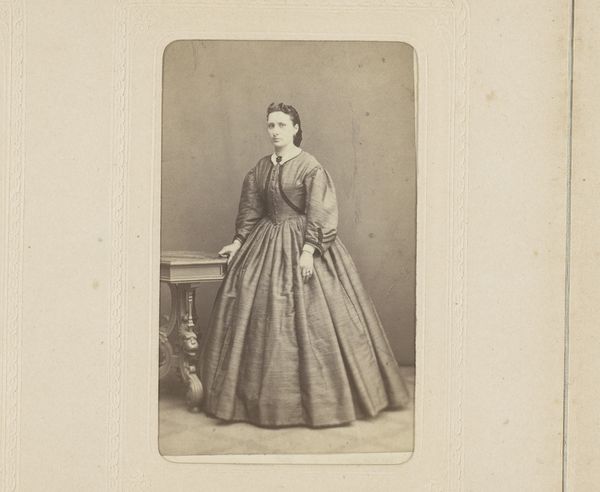
photography, albumen-print
#
portrait
#
photo restoration
#
photography
#
genre-painting
#
albumen-print
#
realism
Dimensions: height 105 mm, width 60 mm
Copyright: Rijks Museum: Open Domain
Editor: Here we have Albert Greiner's "Portret van Johanna Geertruida Jonker Nije," an albumen print from sometime between 1861 and 1874, housed at the Rijksmuseum. The detail in her dress is incredible! What strikes me most is how carefully the composition highlights the textures of the different fabrics used. What's your perspective on this work? Curator: Looking at this albumen print, I'm drawn to the production of this portrait as a commodity. Consider the rise of photography in the 19th century. It offered a relatively accessible means of producing and consuming images, especially for the emerging middle class. This isn't just about capturing likeness; it’s about participation in a system of exchange. Think of the photographer's studio, the chemical processes involved in creating the image, and the distribution of the final product. It speaks to the industrialization of art and the democratization of portraiture. How does her clothing relate to these systems? Editor: That's a great point! Her clothing, especially the intricate lace top, looks hand-made, contrasted with what I’d guess are commercially-produced fabrics for the skirt. It highlights this transition, right? One foot still in craft, the other in mass production. Curator: Exactly. Consider the labor involved in producing each element. The photograph itself, reliant on the chemical industry. Her clothes may have involved both domestic labor and the textile industry's exploitation. Where was Greiner's studio located? Editor: I’m not sure. Somewhere in Europe, presumably? Curator: Further research into his studio and clientele might illuminate how this portrait operates within specific networks of production and consumption. Who could afford a photograph like this and what did that represent socially? Editor: That adds so much more depth than just thinking of it as a representation of a person! Thanks, I hadn't considered that. Curator: It’s all about the materiality of art, the labor involved, and its embeddedness in economic and social structures. That's where we find a deeper understanding.
Comments
No comments
Be the first to comment and join the conversation on the ultimate creative platform.
